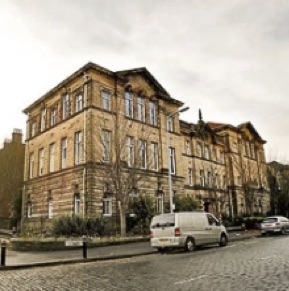Optional stop: 102 Warrender Park Road, EH9 1ET

102 Warrender Park Road was home to the Usher Institute from its opening in 1902 until its move to Teviot Place in 1986. The opening of the Usher Institute closely followed the establishment, at the University of Edinburgh, of the first chair of public health in Britain four years earlier. The new university chair needed an institute and, as soon as Sir John Usher pledged his generous donation, building began. Charles Hunter Steward (1854-1924), the first Professor of Public Health, visited laboratories throughout Europe to ensure that the Usher Institute was built and equipped according to the most up-to-date ideas of laboratory design of the time. The building not only functioned as teaching and practical training space, but as a diagnostic laboratory for Edinburgh. The institute conducted chemical and bacteriological research, such as monitoring water quality and epidemics within the city, thereby honoring Usher’s intention that an important role of the Institute would be the application of scientific research to improve population health in the city.

Find out more






























